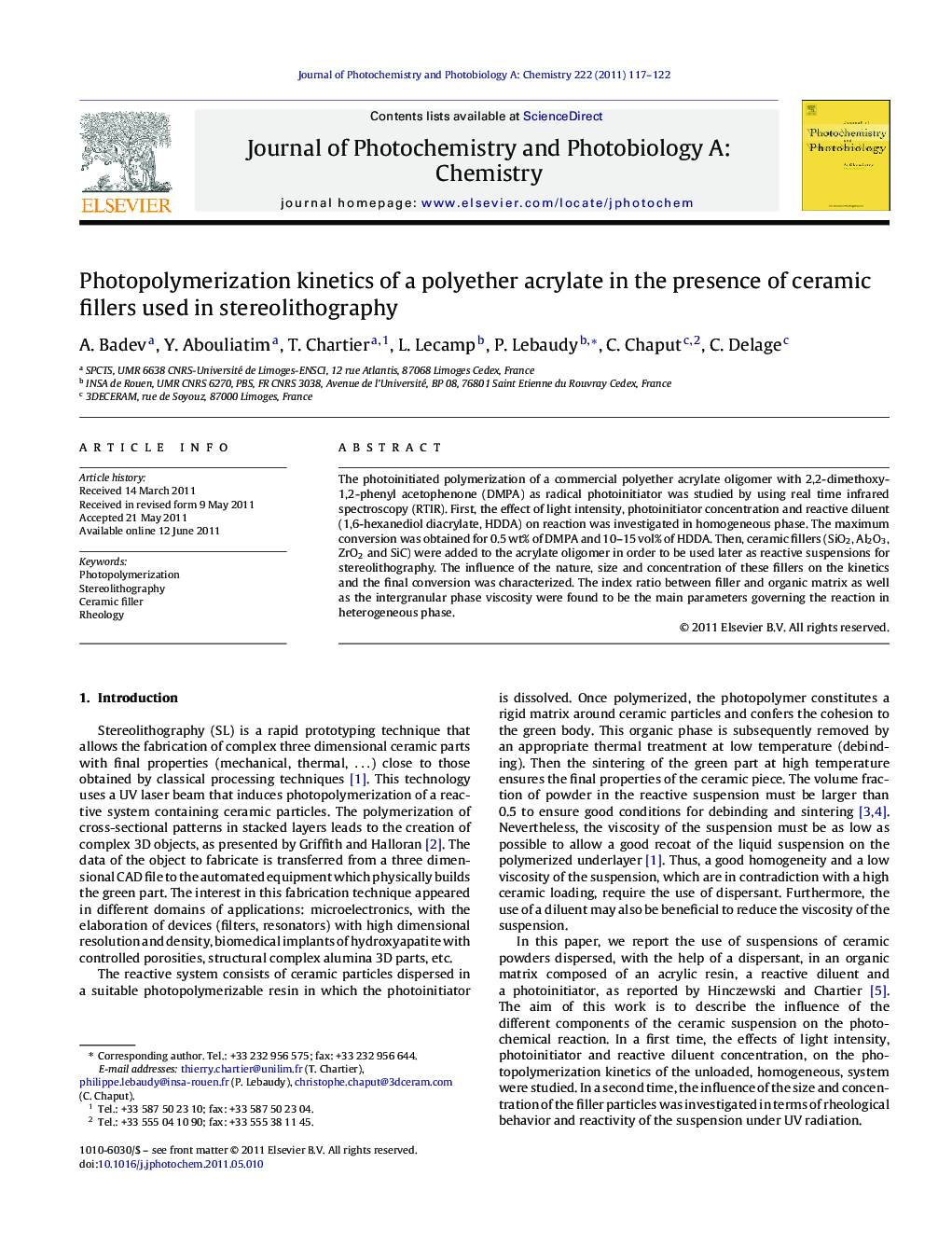| Article ID | Journal | Published Year | Pages | File Type |
|---|---|---|---|---|
| 27371 | Journal of Photochemistry and Photobiology A: Chemistry | 2011 | 6 Pages |
The photoinitiated polymerization of a commercial polyether acrylate oligomer with 2,2-dimethoxy-1,2-phenyl acetophenone (DMPA) as radical photoinitiator was studied by using real time infrared spectroscopy (RTIR). First, the effect of light intensity, photoinitiator concentration and reactive diluent (1,6-hexanediol diacrylate, HDDA) on reaction was investigated in homogeneous phase. The maximum conversion was obtained for 0.5 wt% of DMPA and 10–15 vol% of HDDA. Then, ceramic fillers (SiO2, Al2O3, ZrO2 and SiC) were added to the acrylate oligomer in order to be used later as reactive suspensions for stereolithography. The influence of the nature, size and concentration of these fillers on the kinetics and the final conversion was characterized. The index ratio between filler and organic matrix as well as the intergranular phase viscosity were found to be the main parameters governing the reaction in heterogeneous phase.
► The polymerization of UV-curable ceramic fillers suspensions is investigated. ► The intergranular phase viscosity governs the photopolymerization kinetics. ► Conversion decreases when the refractive index ratio between filler and matrix increases. ► The presence of filler particles induces a light scattering phenomenon. ► Light scattering lowers conversion when particle size increases.
